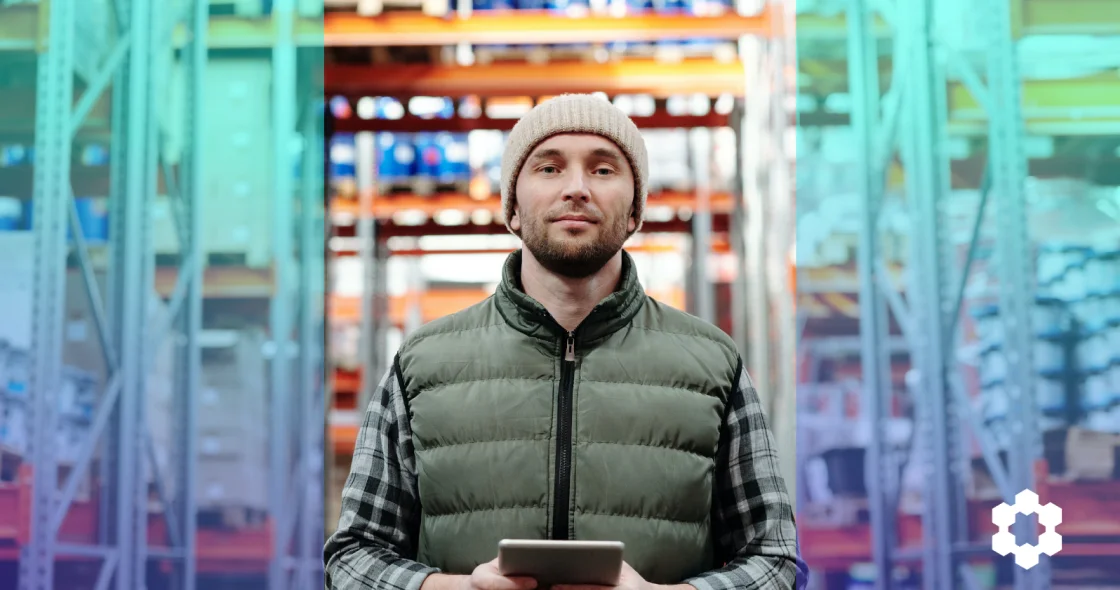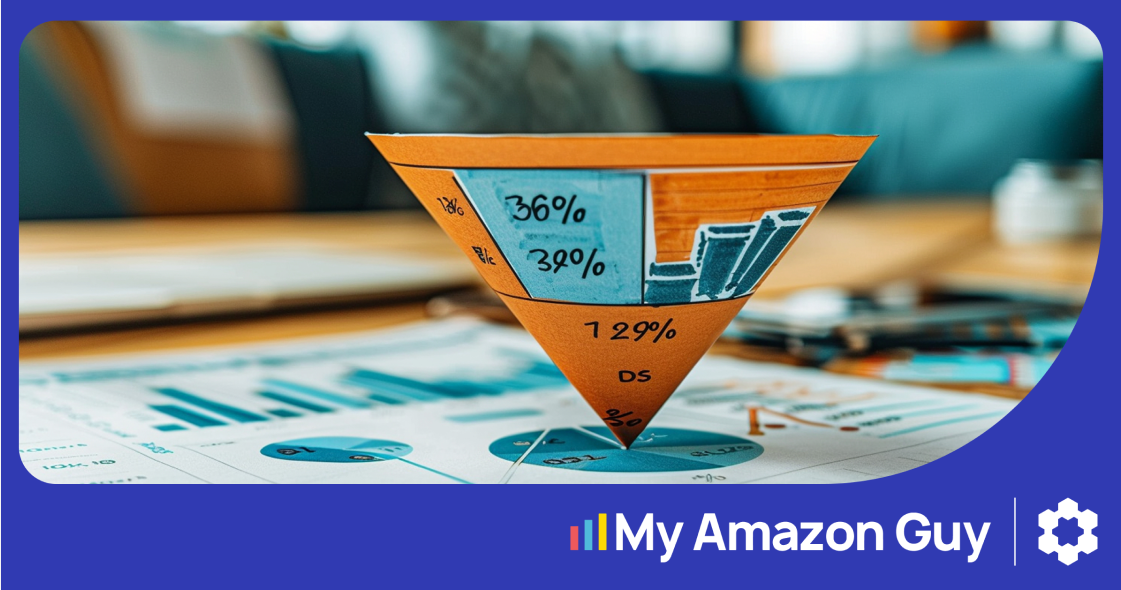After you close a sale, your customer is itching for their order to arrive so they can unbox it, take photos, and even post about it on their social accounts.
That excitement can quickly turn into positive reviews, word-of-mouth referrals, and ongoing customer loyalty — unless late deliveries, broken goods, or other logistical mishaps are getting in the way.
Logistics can make or break your business. It encompasses everything related to your inventory and how it arrives to the buyer. For example, storage conditions to ensure pristine items and efficient picking, all the way to delivery speed and tracking. One survey even found that around 85% of consumers will not return to a brand if they have a poor delivery experience.
That’s why it’s critical to have airtight operations. Here’s a look at the importance of optimized logistics in driving revenue and what you can do to structure your logistics setup for success.
Business Benefits of Good Logistics
Logistics isn’t always the most glamorous part of running an ecommerce business — but it’s one of the most important. Strong logistics can help your brand function efficiently, ultimately driving sales and consumer loyalty. It can also enable brands to:
Eliminate Mistakes
A good logistics setup reduces the chances of human error by automating product tracking across the supply chain. Instead of dealing with lost or misplaced inventory, incorrect item counts, mislabeled goods, or other headaches, you get prep, storage, deliveries, and even returns that work like a dream.
Reduce Refunds
Returns might be virtually unavoidable, but they also often result in both lost revenue and wasted inventory. And when customers complain to their friends about their experience, your brand reputation can take a serious hit. In fact, unhappy customers are two to three times more likely to post a review than your happy customers, reports Reputation Builder.
So why do customers return items?
A whole host of reasons. The most common, according to Chargeback Gurus, include they received the wrong size or variant; the product was damaged during shipping; or the delivery arrived too late. A strong logistics process can help you avoid returns and refunds altogether by ensuring the right products get to the right customers at the right time.
Boost Conversions
An efficient logistics process enables you to tap into conversion drivers, such as offering free two-day shipping that encourages shoppers to buy. Thanks to smart inventory placement that can store inventory close to demand, for example, merchants can also offer fast or free shipping perks — without damaging their bottom line.
Save Money
Optimized logistics often equals significant cost savings. With a strong operational infrastructure, you can:
- Avoid lost inventory that results in lost money.
- Prevent incorrect or damaged deliveries that drive refunds.
- Save on inbound and outbound shipping costs with strategic warehouse placement.
- Improve prep efficiency, which can save you time and money.
Strengthen Communication
Your relationship with your buyers is key to your success.
Good logistical processes can help you better communicate with your buyers about what to expect, where their items are, and how to find items using tracking data.
Better communication makes for a better buyer experience — and fewer frustrated callers taking up your support team’s time asking “where is my package?”
How To Build Resilient Logistics
The secret to building strong logistics?
Embed logistical strategies into every area of your operations. When you take a logistics-first approach, you prioritize the customer experience and protect your brand reputation. Follow these steps to structure your operations with logistics at the helm.
1. Start With Strong Software
Spreadsheets are fine for small projects, but they’re typically not scalable.
Instead, invest in a warehouse management system and inventory tracker that includes barcode scanners, auto-updates from your various sales channels, and has real-time tracking for order delivery status.
Some tools to look into:
Ask your warehouse manager what WMS they’ve liked working with in the past. You’ll get the best adoption for easy-to-use tools that facilitate quick inventory tracking and management.
2. Ensure Multiple Points of Inventory
It’s rarely a good idea to put all your inventory eggs in one basket. When you have some in fulfillment by Amazon (FBA), others in your own warehouse, and still others in a third-party logistics (3PL) vendor’s warehouse, you cover all your bases.
When one node fails, another should kick in. If you run out of inventory in FBA, for example, you should have a fulfilled by merchant listing that can save your sales and prevent customers from going to competitors.
Likewise, if a direct-to-consumer (DTC) order from your warehouse suddenly gets lost, your 3PL should be able to fulfill it without your buyer even realizing anything went wrong.
3. Keep Clear Records
When an issue pops up, having strong records can save the day. Developing a system for tracking inventory can enable you to resolve discrepancies, find the root of delivery problems, and prevent issues from happening again.
Having the right software in place will help with this by giving you an automated, up-to-date tracking system. But it’s also important to ensure you’re maintaining inventory records when organizing your warehouse, packaging goods, and managing process providers.
Consider how the volume and frequency of product recalls can impact a business, for example. If a certain ingredient or batch of products is recalled, strong record-keeping can help you efficiently identify which need to go back — rather than having to recall all your stock.
Which reports to record and check regularly:
- Inventory cycle count
- Low stock items
- Poorly performing products
- Best selling products
- Inventory turnover
- Inventory on-hand
- Cost of goods sold
4. Stay Close To Your Supply and Demand — Literally
Having warehouses close to ports or your manufacturers allows you to label, kit, bundle, and otherwise prep your goods as soon as orders come in.
This is particularly helpful if you need FBA, as you can prep and replenish more quickly and save time and money otherwise spent hauling items between locations.
If you sell DTC, consider storing inventory in warehouses that are closest to consumers. Doing so can enable you to save on shipping costs and achieve loyalty-boosting delivery speeds.
5. Find a Reliable Omnichannel Partner
The best logistics partners can handle your inventory from port to porch.
MyFBAPrep, which handles everything from prep to fulfillment and works within any sales channel, for example, has a global network of more than 50 warehouses across the U.S., Canada, Mexico, Europe, and other regions to ensure efficient logistics in any market.
Working with an ideal logistics partner often looks like this:
- The brand sends items to their logistics partner’s location close to the brand’s manufacturer or port of entry.
- The partner preps goods according to the brand’s channels and specifications.
- Immediately or as needed, the partner sends inventory out. Ideally, this would happen within a 24- to 48-hour turnaround time.
6. Identify Your Optimal Dunnage
The packaging and protective material you use to ship out your goods is as important as your shipping methods and strategies.
You want to use the correct size boxes, an optimal amount of dunnage, and the best packing method to ensure minimal waste and maximum protection.
Study which packaging keeps fragile items safe most effectively or which arrangement of items within a package makes the most sense for shipping purposes. The prep work will be well worth it when your customers are rewarded with a pleasant unboxing experience.
Invest in Your Logistics To Safeguard Your Brand
Logistics shouldn’t be an afterthought or a chore. Optimized logistics does wonders to protect and enhance your brand, while also helping to grow your revenue, retention, and reputation.
And no matter what systems you put in place to refine and enhance your logistics, be sure to continuously evaluate and improve your operations. That continuous improvement can often lead to revenue-boosting efficiencies.








